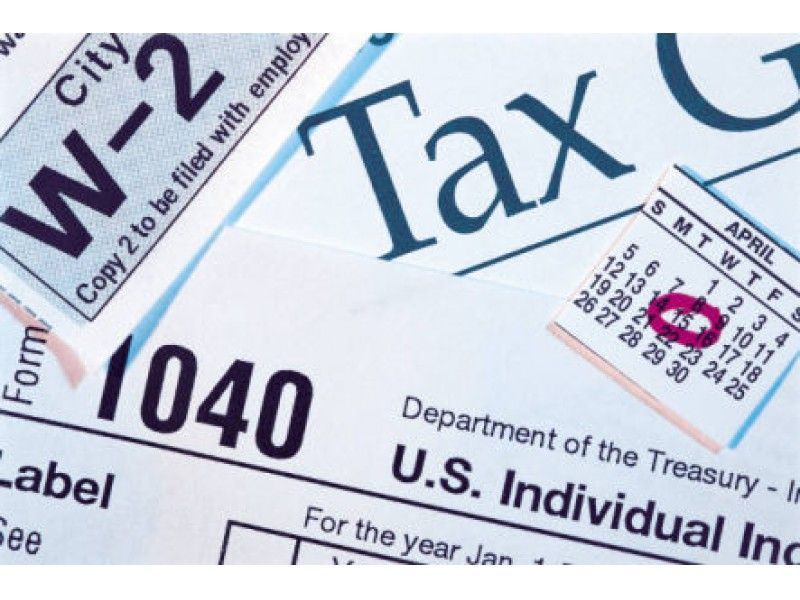Article by: Jeffrey Skolnick, CPA, M.S. Taxation
I am back at it again with more information on the Payroll Protection Program (PPP). This has quickly become one of the most popular programs out there, and while there has been some more guidance issued late Monday night (April 6th), many aspects are still unclear. The program’s rollout has definitely gotten off to a rocky start, therefore this writing will discuss the good, the bad and the ugly of the program.
The Good
Monday night the Treasury Department and Small Business Administration (SBA) posted an 18-point FAQ on the PPP. I have attached a copy to this writing for those who are interested.
Many of the questions and answers had to do with clarifications for lenders. These were related to such areas as the amount of work required of lenders to check the accuracy of average payroll cost, clarification on businesses that are eligible for the program and other clarifications of which SBA rules these lenders are subject.
There were some items where these FAQs shed some much-needed light. As you know, one of the most important items of this program, and most likely the most important, has to do with the average payroll cost calculation. This figure is the number, that once calculated, is multiplied by 2.5 in order to determine the maximum amount of the loan available to a small business. One issue that has been on everyone’s mind since the law was first passed was how to calculate the payroll costs of an employee with compensation in excess of $100,000. Payroll costs include not only wages, tips, etc., but also the cost of group health plan benefits retirement plan expenses and company portion of state and local taxes assessed on these employees as well. The debate was over whether the $100,000 cap per employee included the health and retirement benefits and state taxes or whether there was a $100,000 cap on salary only and health, retirement benefits and state taxes could be added, therefore pushing compensation of an employee over $100,000. Question number 7 of the attached FAQ sheet states that the $100,000 cap is on salary only and the other costs can be added to increase the compensation over $100,000.
Question 8 addressed whether PPP loans cover paid sick leave. This is an area that I thought was pretty straight forward. The law states that PPP covers payroll costs, including costs for employee vacation, parental, family and medical sick leave. It does not include qualified sick and family leave wages covered under the Families First Coronavirus Response Act (FFCRA). These are wages related to individuals who are paid sick and family and medical leave for coronavirus related reasons. These could be either for the employee’s own health or to care for others. Generally, workers are covered for 80 hours of paid sick leave with an additional 10 weeks of paid family leave to care for a child whose school or place of care is closed or unavailable due to the COVID-19 pandemic. These wages are not included because the FFCRA provides a credit of 100% of the wages paid, employer’s Medicare tax on these wages, cost to maintain health coverage during the sick leave and also exempts the employer form their share of Social Security tax on these wages.
There has been confusion surrounding the time period borrowers should use to determine their average monthly payroll costs (again this is the most important figure when calculating the maximum loan available). Question 14 addresses this and the answer is borrowers can use data from the previous 12 months or calendar year 2019. The previous 12 months to me is still a little confusing. Do we have to use April 1, 2019 through March 31, 2020? This would drive your average payroll down as most businesses were closed for at least part of March. Can we use March 1, 2019 through February 29, 2020 (12 months before the pandemic)? This is unclear but quite frankly what I was recommending before the FAQ stated that you can use 2019. I like using 2019 because if the banks require documentation (which they all do), we can easily provide payroll tax returns for employees, Schedule Cs or profit and loss statements for sole proprietors and K-1s for partnership/LLC members. If you were not in business from February 15, 2019 through June 30, 2019, you may use the average monthly payroll costs from January 1, 2020 through February 29, 2020. As with many items in this law, it is not 100% clear as to whether that last rule I mentioned applies only to seasonal businesses. I believe it can be used for businesses that were in operation under 1 year.
Finally, we seem to have clarity on how to deal with federal taxes when determining payroll costs. This is covered by Question 16. If you remember from my previous writings, there was a ton of confusion surrounding whether Social Security, Medicare and Federal withholding taxes withheld from an employee had to be subtracted from an employees gross payroll before counting it as part of payroll costs. Doing so would severely reduce the amount of money available to pay employees over the 8 weeks after the money was received and, after all, that was the purpose of this whole program to begin with. In addition, we had conflicting reports on whether the employer’s share of Social Security and Medicare taxes would be added. Lastly, when dealing with the forgiveness portion of this law, we were being told that we had to use net payroll and that would result in most, if not all, borrowers not being able to ever have all proceeds forgiven. They would have to pay some of the loan proceeds back. This would cause an uproar as almost all are under the assumption that as long as the money is spent in accordance with the provisions of the law and there is no reduction in the workforce, the loan would be forgiven.
Thankfully, we finally have a definition which is universal whether looking at calculating the maximum loan amount, allowable uses of the funds or the amount of forgiveness allowed. The new, and hopefully final, definition is that we use gross payroll. There is no reduction for Social Security, Medicare or Federal withholding taxes. Employer’s share of Social Security and Medicare taxes are not part of the calculation and state taxes (such as unemployment) increase payroll costs. Remember payroll costs also include health and retirement benefits.
The last question I want to address from the FAQ is question 17. This question addresses the situation in which you incorrectly submitted a loan application based on the Final Interim Rule which was published on Thursday April 2nd. The question asks whether the borrower needs to do anything. The answer was no, borrowers and lenders will deal with this. The final sentence did say borrowers whose previously submitted loan applications had not been processed may revise their applications based on clarifications of the FAQ. Has anyone submitted this application yet? If you have it was probably a process and couple that with the fact that banks are simply overwhelmed, and I say good luck to anyone that wants to revise an application.
The Bad
Although some of the clarifications mentioned help quite a bit, considering this program affects so many small businesses and individuals it is mind boggling to me that so many questions still exist. If the following questions were answered (and I’m not claiming these are the only questions, but they are the major ones), I believe 90% of the issues would go away. Here are the items I feel still need to be addressed:
Do the earnings of an S corporation count as a cost in the payroll cost computation? There are really only 4 ways earned income can be received. These would be through a W-2 (wages, tips, etc.), as a sole proprietor or single member LLC (same treatment for both of these), through a partnership or multi-member LLC treated as a partnership for tax purposes (same treatment for each of these) or as S corp earnings. I cannot believe with only 4 methods that there is still nothing on S corp earnings. My gut feeling is they are not included because once the law gets away from discussing W-2 employees it mentions sole proprietors, independent contractors (which in my mind is the same thing) and individuals with self employed income (which could come from a partnership of multi-member LLC). S corp earnings are not subject to self-employment and therefore I believe only wages earned by an S corp shareholder would be covered. The argument for including them as compensation is that under The Tax cuts and Jobs Act S corp earnings were counted as self employed income when calculating the 20% Qualified Business Deduction. This law, however, also included real estate rentals which we know do not count for the PPP. The argument against it is that the law is meant to cover payroll and as an S corp shareholder you are supposed to take a reasonable salary. Many S corp shareholders take low salaries and high S corp earnings because they pay employer and employee taxes on wages. This may be where this bites them. I can see the government saying that for the last 5 years you’ve claimed $12,000 a year was a reasonable salary so don’t whine now.
In the original law it is clear that group health and retirement benefits are considered part of payroll costs for employees. The law is silent on sole proprietors, independent contractors or others earning income from self-employment. Can these individuals add health insurance and retirement costs to their payroll cost?
Can S corp shareholders include health benefits which would push them over $100,000 in compensation? We know from the FAQ that while compensation of employees is capped at $100,000, these employees are still entitled to health and retirement benefits. I certainly believe S corp shareholders can include retirement benefits, but health benefits are little murkier. The reason for this is that a more than 2% shareholder of an S corporation is required to add health benefits to their W-2 wages (these benefits are not subject to Social Security or Medicare taxes). These shareholders then get to deduct these health benefits as self employed health insurance “above the line”. Above the line simply means above the Adjusted Gross Income (AGI) line. This is important because they receive the deduction whether they itemize or not. Setting aside the ridiculousness of making individuals add an amount to a W-2 and subtract it as an expense as opposed to just allowing it as a company expense, if these employees are capped at W-2 wages of $100,000, then they are not in an equal position of employees who are capped at $100,000 and have health benefits added. I feel that these individuals should be capped at $100,000 plus the health benefits added to their W-2 and of course retirement benefits and state income taxes paid by the employer should also be added.
When looking at retirement benefits, are we looking at what was paid in 2019 (which might be for 2018) or what is accrued for 2019? Also, if we are allowed to count retirement costs, can an individual use proceeds from a PPP loan to fund an IRA or SEP?
I have heard rumblings that workmen’s compensation and disability premiums may be includable as a health care benefit. I do not believe this to be the case, but one sentence issued by the government would certainly make it easier to know for sure.
The Ugly
The rollout of this program has been anything but smooth. On the positive side, many small businesses and individuals are extremely interested. The problem, as is the case with most problems in this law, comes from the fact that nearly 900 pages of legislation was passed in a very short amount of time. Not only did that create ambiguity in the law for borrowers (seems like every day there are more clarifications), but for lenders as well. The “Final Interim Rule” written by the SBA on Thursday night (April 2nd) was the result of lenders begging for clarification before they began lending under this massive plan. The Rule came out late Thursday and, as a result, most banks were not up and running with this on Friday. At this point most, but not all, banks are up and running. Wells Fargo, a major player, opened Saturday and by Sunday said they had reached their quota of applications for the money they were allotted. I spoke to 3 individuals today who indicated their banks has reached capacity and no other bank would allow them to apply. The issue is the banks all know they have a tremendous amount of applications and limited funds available and are taking care of existing business customers first. Each of these banks feel they will be out of money before being able to service anyone that is not a current customer.
This leaves many in a bad spot and has me thinking that I may start suggesting to my clients that they develop a relationship with a minimum of two banks through their business. This will not be easy, because I don’t think banks will consider you a customer if you open an account and do nothing with it. These should be active accounts, possibly an operations account in one bank and a payroll account in another.
To end this on a positive note I want to say I believe this problem will be rectified. I have been saying since the law passed that I expected the stimulus checks to go out without much issue (and I still believe they will) and I expected bottlenecks in both the unemployment offices and with lenders. This was no dig at anyone. I’m a numbers guy and I just thought that the massive increase in volume would overwhelm the system. Keep in mind it is an election year. This means the Trump administration is going to push for more money (he’s already said this) and every house seat is up for election as well as one third of the senate seats. This is money going directly to voters. I just don’t see anyone blocking it. Again, I believe the situation will be rectified. Nobody wants to see people promised money and then shut out of the system. I do believe it will take a bit longer than people expected.
Hang in there and stay safe.
If you’d like to book an appointment with me, please choose a time below:
Stay safe and make sure you check out my Facebook Live every Monday at 12:30 PM EST
View FAQs from the Journal of Accountancy HERE.






